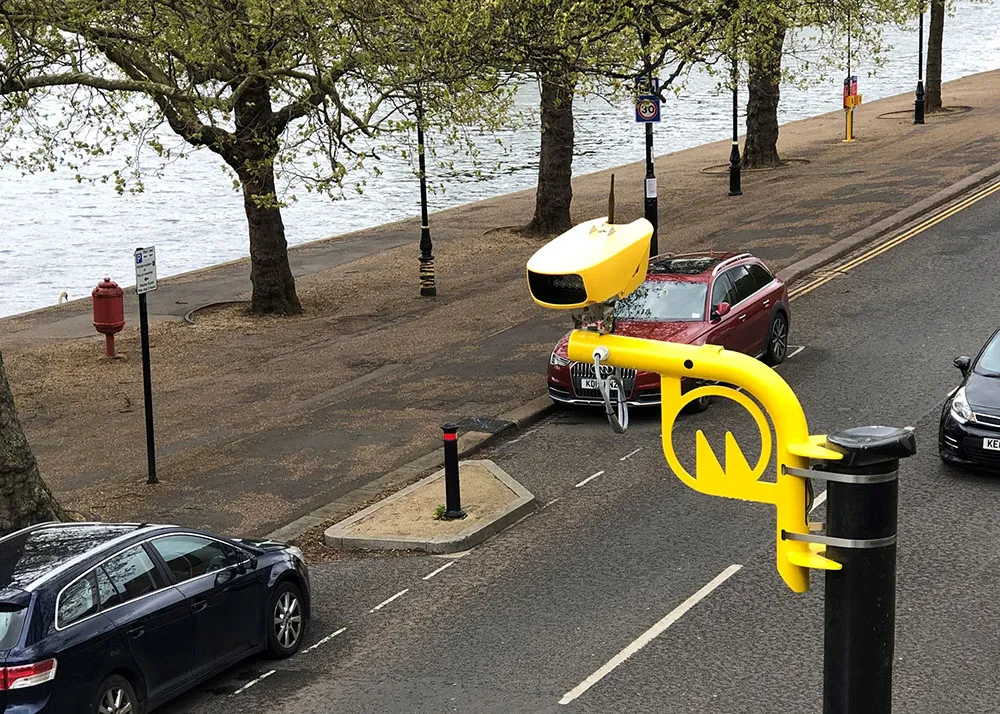Analysis carried out by American Traffic Systems (ATS) on routes where its CrossingGuard school bus stop arm cameras are installed found that, while the number of violations on those routes fell by more than 15 per cent during the school year, customers have reported stop arm running violation decreases fleet wide, on all buses.
The analysis also finds that less than one per cent of drivers who receive one ticket get a second citation. Both results indicate the camera safety programs are off to a quick
July 4, 2014
Read time: 3 mins
Analysis carried out by 6826 American Traffic Systems (ATS) on routes where its CrossingGuard school bus stop arm cameras are installed found that, while the number of violations on those routes fell by more than 15 per cent during the school year, customers have reported stop arm running violation decreases fleet wide, on all buses.
The analysis also finds that less than one per cent of drivers who receive one ticket get a second citation. Both results indicate the camera safety programs are off to a quick start at gaining drivers’ attention and influencing their behaviour.
The study tracks the number of citations issued from 290 school bus safety cameras in 15 separate programs in Georgia, Maryland, Virginia and Texas during the 2013-2014 school year. The report calculates the average number of citations per camera because programs in the study came online at different times throughout the year. Other findings in the online report include: Authorities issued 14,319 citations based on traffic violations captured on school bus safety cameras; The day of the week when most citable infractions occur is Wednesday; Slightly more violations occur on afternoon routes than for morning; For violations issued during the 2013/2014 school year, 99 percent of all drivers who received a violation for illegally passing a stopped school bus, did not receive a second. This low rate of repeat offenders indicates drivers are changing their behaviour.
In Cobb County Georgia, there were 1300 violations issued in August of 2013. In April of 2014, the number was 767, a 40 per cent decrease.
ATS CrossingGuard school bus stop arm cameras are typically placed on bus routes where a significant stop arm running problem has been identified.
ATS supports all CrossingGuard stop arm programs with award winning public education materials that help increase community awareness about the dangers of school bus stop arm running.
“Each year, millions of drivers ignore their local traffic laws and blatantly pass school buses with children nearby who are innocently expecting drivers to stop. ATS is proud to work with so many school districts that recognise the safety benefits that come from installing cameras on the side of their school buses to assist police with the enforcement of traffic laws,” said ATS State and Local Government Solutions president Adam Tuton.
The analysis also finds that less than one per cent of drivers who receive one ticket get a second citation. Both results indicate the camera safety programs are off to a quick start at gaining drivers’ attention and influencing their behaviour.
The study tracks the number of citations issued from 290 school bus safety cameras in 15 separate programs in Georgia, Maryland, Virginia and Texas during the 2013-2014 school year. The report calculates the average number of citations per camera because programs in the study came online at different times throughout the year. Other findings in the online report include: Authorities issued 14,319 citations based on traffic violations captured on school bus safety cameras; The day of the week when most citable infractions occur is Wednesday; Slightly more violations occur on afternoon routes than for morning; For violations issued during the 2013/2014 school year, 99 percent of all drivers who received a violation for illegally passing a stopped school bus, did not receive a second. This low rate of repeat offenders indicates drivers are changing their behaviour.
In Cobb County Georgia, there were 1300 violations issued in August of 2013. In April of 2014, the number was 767, a 40 per cent decrease.
ATS CrossingGuard school bus stop arm cameras are typically placed on bus routes where a significant stop arm running problem has been identified.
ATS supports all CrossingGuard stop arm programs with award winning public education materials that help increase community awareness about the dangers of school bus stop arm running.
“Each year, millions of drivers ignore their local traffic laws and blatantly pass school buses with children nearby who are innocently expecting drivers to stop. ATS is proud to work with so many school districts that recognise the safety benefits that come from installing cameras on the side of their school buses to assist police with the enforcement of traffic laws,” said ATS State and Local Government Solutions president Adam Tuton.









